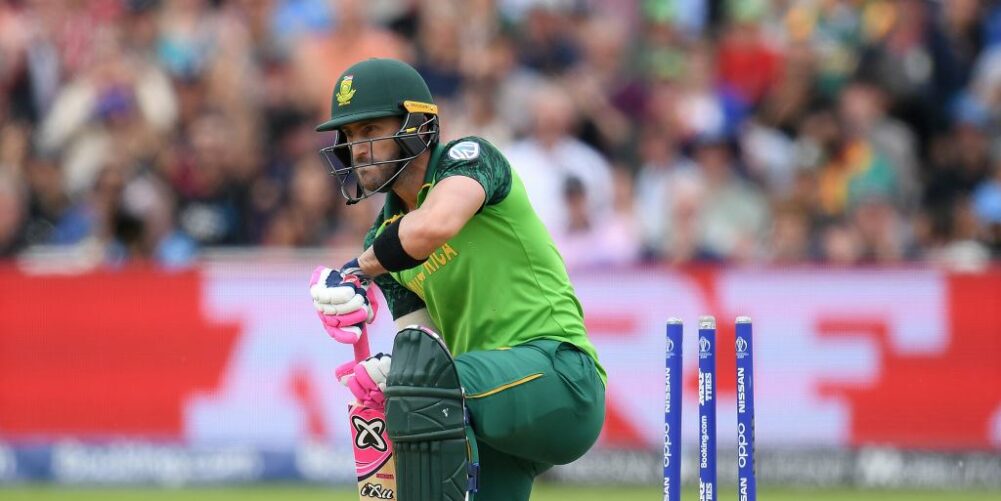It is never wise to mock misfortune yet somehow, when it comes to South Africa’s cricket teams, sympathy turns to schadenfreude every time they mess up – something of a default position for them in World Cups.
The widespread glee, at their expense,
probably has something to do with the macho nature of South Africa’s sport and
the fact that it appears largely humour-free. If they didn’t take it so
seriously I doubt the measure of their latest downfall, or the ones that
preceded it, would be half as pleasurable to opponents.
The latest calamity everyone is talking
about is their defeat on Wednesday to New Zealand in the World Cup, a loss that
almost surely seals their exit from a tournament they entered as third favourites
just three weeks ago.
In a match played under leaden skies at
Edgbaston on a pitch that demanded respect from the batsmen, South Africa read
the runes and limited their ambition to a total which New Zealand would have to
work hard for rather than be gifted. Except that, in the end, that is exactly
what happened after Faf du Plessis’ team fluffed the opportunity that could
have won them the game.
The boo-boo occurred in the 41st over when
Colin Miller failed to take a throw from bowler Kagiso Rabada as Kane
Williamson, the one batsman seemingly in control of the situation, hesitated
over a leg bye. A clean take by Miller, at the bowler’s end, would have seen
him run-out with New Zealand still needing 58 off 53 balls but with only four
wickets in hand. Instead, Williamson survived, reached his hundred in the final
over with a six, and saw his team home with three balls to
spare.
Such mess-ups are nothing new to South
Africa. Perhaps the greatest of them came in a semi-final against Australia in
the 1999 World Cup, also held in England. With South Africa nine wickets down
but needing nine runs off the final over, bowled by Damien Fleming, it looked
theirs to lose after Lance Klusener struck the first two balls for four.
With one run required for a place in the
final, and with the field now up saving the single, a dot ball followed. What
happened next, with three balls remaining, will be forever etched in the minds
of those present and not just the players. Fleming gets the ball in the
blockhole, Klusener digs it out towards mid-off and sets off for a very risky
single. Except that Allan Donald, having almost been run out backing up too far
the previous ball, does not respond and instead turns his back to make his
ground.
Donald then realises Klusener is hurtling towards him and drops his bat in panic. Meanhwile, Mark Waugh has fielded the ball which he flicks at the stumps. It misses, but Fleming collects and flicks it on to wicket-keeper Adam Gilchrist, who removes the bails with Donald batless, clueless, and half a pitch short of making his ground. Calamity, stupidity and indignity all rolled into one.

The match is tied, but Australia proceed to
the final by virtue of beating South Africa in an earlier round, a game they
would probably have lost but for a simple dropped catch by Herschelle Gibbs,
who put down Steve Waugh in the early stages of his match-winning 120. Had
Australia lost then they would probably have failed to make the knockout
stages. That incredible semi-final was when South Africa first acquired their
reputation as chokers, a tag that has been around their necks ever since.
It wasn’t panic that did for them in the
1992 World Cup semi-final, this time against England. On that occasion it was
the barmy rain rule, partly invented by Richie Benaud, that saw them needing 23
runs off one ball after a rain shower interrupted the final 30 minutes of the
match at the Sydney Cricket Ground.
Although the matter made cricket look
ridiculous, given the importance of the match, South Africa had cynically
slowed their over-rate (with England going well) to the point where they bowled
just 45 of the 50 overs in the time allotted. As a result, there were as many
who felt poetic justice had been served as those who felt that South Africa had
been robbed.
If Wednesday’s result does dump them out of
the tournament, New Zealand will have proved their nemesis in the last three
World Cups. In 2011, a quarter-final against them in Dhaka turned into a comedy
of errors as they chased a modest 222 to win. Set fair at 108 for two in the
25th over, they contrived to be dismissed for 172 with eight overs remaining.
The main blunder on this occasion was the
unnecessary running out of AB de Villiers, called through for a risky single by
Faf du Plessis. Pressure can get to the best of players, but South Africa’s
seem to crumple in its presence more than most.
Four years after that saw another World Cup
loss to New Zealand, this time in a rain-affected semi-final at Auckland. What
made this a bitter pill was that South Africa had posted a very competitive 281
of 43 overs which under the algorithms of the Duckworth Lewis Method had been
boosted, leaving New Zealand to score 298 from the same number of overs.
They might have prevailed, too, had Grant
Elliott, New Zealand’s champion with 84 off 73 balls, not been dropped at a
crucial juncture. Big, noisy crowds can scramble communications between players
in the field but there must be a total lack of awareness for two fielders to
collide while going for the same catch, as JP Duminy and Farhaan Behardien did
when Elliott hit one into the deep.
If the irony of Elliott being South
African-born and raised hadn’t struck them then, it surely did when he
clobbered the winning six with one ball remaining.
A team forever blighted, it seems, in World Cups.
DEREK PRINGLE / Getty Images















